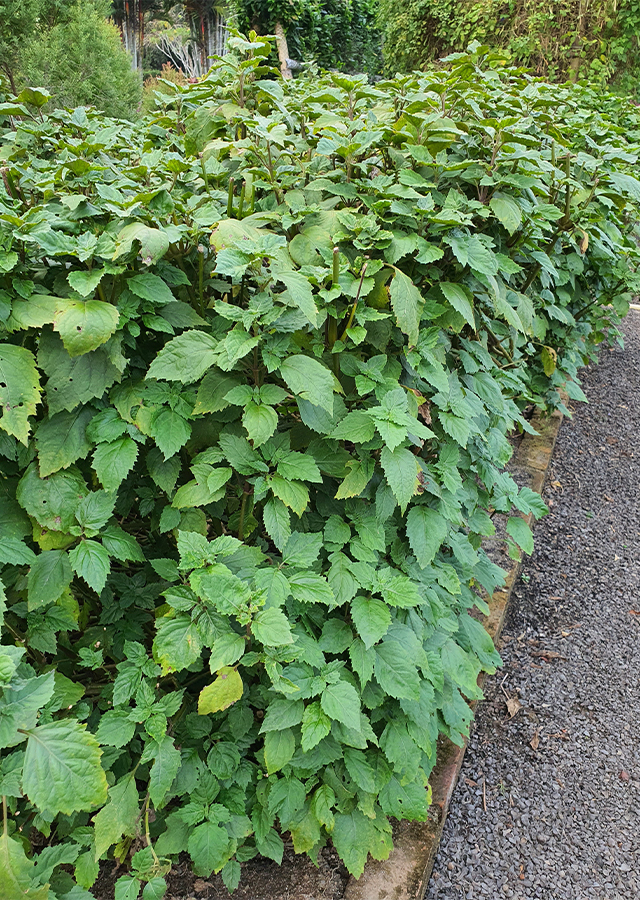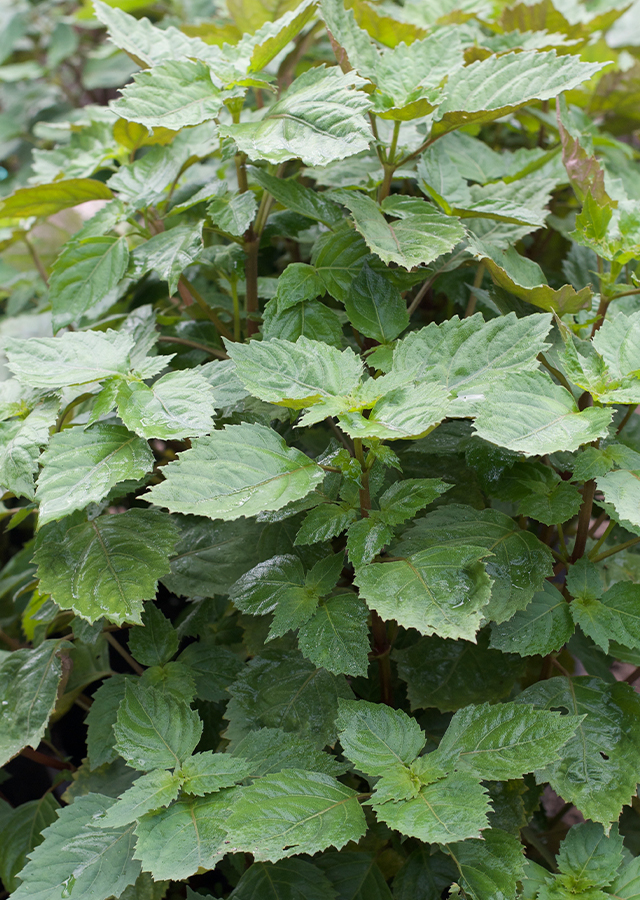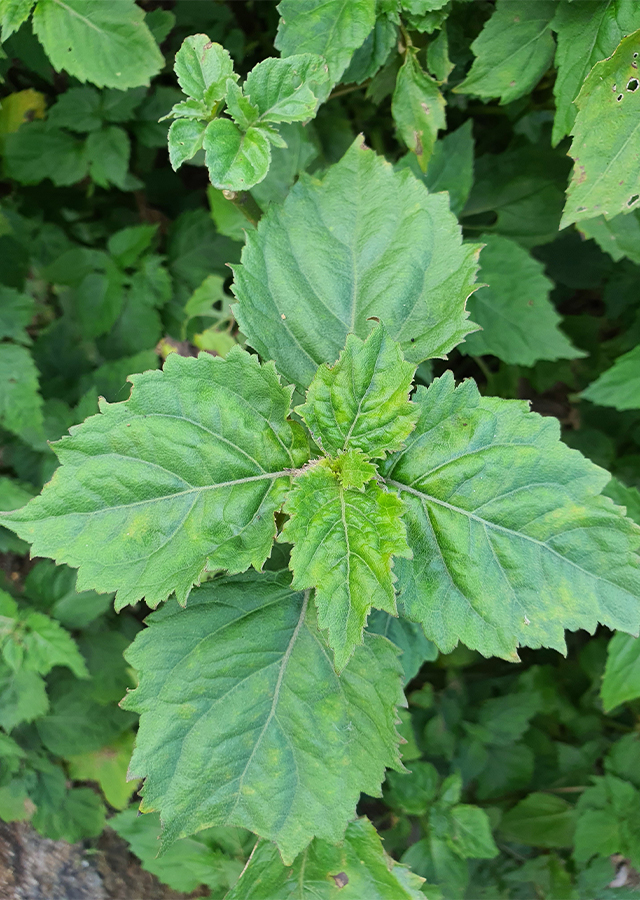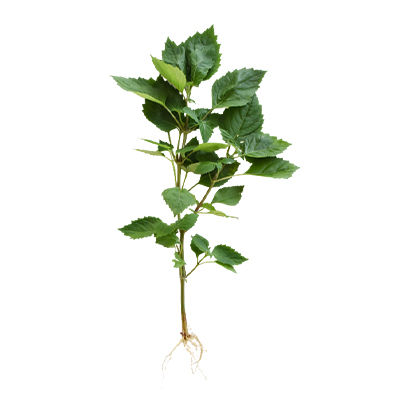Pachouli
Pogostemon cablin (Blanco) Benth.
Lamiaceae
Location in our garden
Principal



Synonym
Mentha auricularia Blanco
Mentha cablin Blanco
Pogostemon battakianus Ridl.
Habitus
Shrubs. Erect or ascending aromatic, herbaceous plant or shrub, perennial, grows up 100 cm tall
Part Used
Leaves
Growing Requirements
High Rainfall
Habitat
Terrestrial
Overview
This plant is a very important in traditional Chinese medicine. It has been cultivated in southern China since the Song Dynasty after being introduced from southeast Asia (e.g., the Philippines, Malaysia, and India) more than 1,000 years ago. It is the source of a well-known essential oil, which also has medicinal applications.
Vernacular Names
Dhalum wangi (Malaysia), Phimsen (Thailand), Pachapat (India), Guan Huo Xiang (Chinese), Hyangdukkaephul (Korean), Patchouli (French), Nilam Wangi (Indonesia), Pachuli (Spanish), Hoắc Hương (Vietnam).
Agroecology
P. cablin is adaptive to a wide range of climate and soil conditions. For optimal growth, it needs yearly high rainfall of 2000-3000 mm. It can grow up to 2000 m above sea level although possibly it’s not tolerant of frost. Continuous full sunshine might cause bad growth, resulting in dwarfing and yellowish leaves. It grows on a broad range of soils, but for industrial scale production, very fertile soil is needed.
Morphology
- Stems – angular in shape, branched.
- Leaves – opposite arrangement, short hairs, oblong-ovate to ovate, 5 to 11 cm long, with coarse and simply or doubly-toothed margins, a pointed tip, many gland dots below.
- Flowers – terminal panicle. Calyx is about 4-6 mm long; corolla is 6-7 mm long, white, lavender-blue or violet; filaments inserted in the tube.
Cultivation
P. cablin is cultivated asexually by cuttings. In Indonesia, cuttings 5-10 cm long are taken from the central part of semi-mature stems in which cuttings from 9-month-old plants give the best result.
Chemical Constituents
δ-elemene, β-patchoulene, β-elemene, cis-thujopsene, trans-caryophyllene, α-guaiene, γ-patchoulene, α-humulene, α-patchoulene, seychellene, valencene, germacrene D, β-selinene, α-selinene, viridiflorene, germacrene A, α-bulnesene, 7-epi-α-selinene, longipinanol, globulol, patchouli alcohol, 1-octen-3-ol
Traditional Medicinal Uses
- Leaves
Boiled and used with other herbs to treat nausea, vomiting, diarrhoea, colds and headache (China)
Infused to relieve painful menstruation (Philippines)
Mixed with guava and orange peel to treat diarrhea (Thailand)
Added to bath water to soothe rheumatism
- Patchouli oil
Used as antidote to snakebite (Japan and Malaysia)
Part Used
Reference Sources
- Bunrathep, S., Lockwood, G.B., Songsakc, T., et al. 2006. Chemical Constituents from Leaves and Cell Cultures of Pogostemon cablin and Use of Precursor Feeding to Improve Patchouli Alcohol Level. Science Asia. 32: 293-296.
- Oyen, L.P.A. and Dung, N.X. (Editors). 2006. Plant Resources of South-East Asia No 19. Essential Oil Plants (2nd ed). Prosea Foundation, Bogor, Indonesia. 277 pp.



